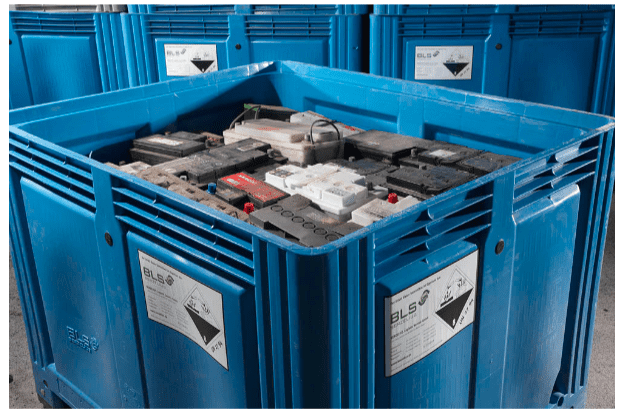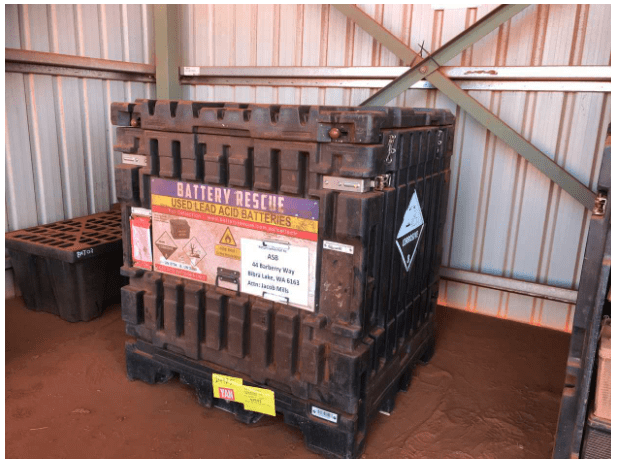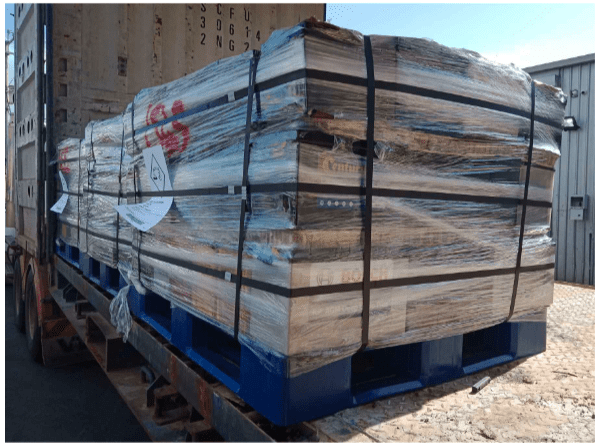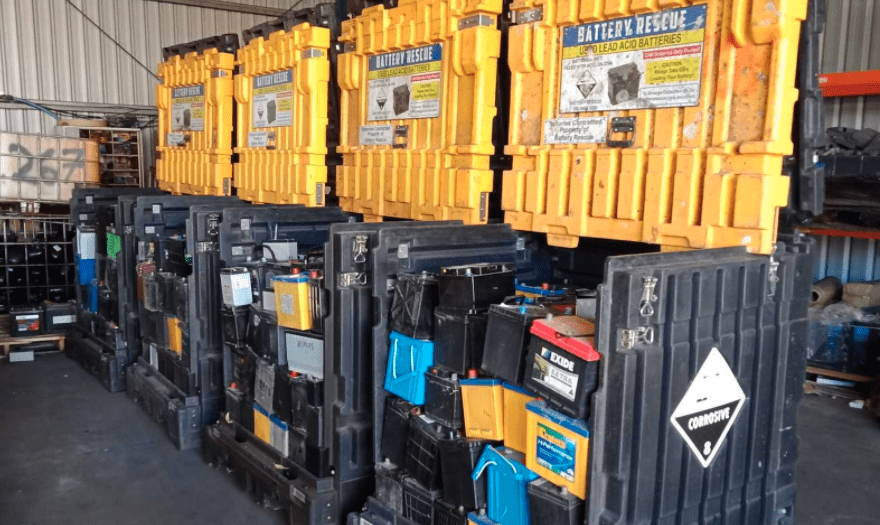New regulations governing the transportation of lead acid batteries (new & used) are to be adopted in edition 7.7 of the Australian Code for Transportation of Dangerous Goods by Road & Rail (ADGC). The new regulations come into effect in October 2020.
The National Transport Commission (NTC) has adopted the new P801 Packing Instructions approved in June 2018, by the UN Subcommittee of Experts for the Transportation of Dangerous Goods. Upon inclusion in the ADGC there is a 12-month period before they become mandatory.
Transporting used batteries | Understanding the risks
The ADGC’s new P801 Packing Instruction (PI) for new and used lead acid batteries are shown below with deletions from the current P801, shown.
P801 PACKING INSTRUCTION
This instruction applies to UN Nos. 2794, 2795 or 3028
The following packagings are authorized, provided that the provisions of 4.1.1.1, 4.1.1.2, 4.1.1.6, and 4.1.3 are met:
- Rigid outer packagings, wooden slatted crates or pallets.
Wooden slatted crates;Pallets.
Additionally, the following conditions shall be met:
- Batteries stacks shall be in tiers separated by a layer of electrically non-conductive material;
- Battery terminals shall not support the weight of other superimposed elements;
- Batteries shall be packaged or secured to prevent inadvertent movement;
- Batteries shall not leak under normal conditions of transport or appropriate measures shall be taken to prevent the release of electrolyte from the package (e.g. individually packaging batteries or other equally effective methods); and
- (e) Batteries shall be protected against short circuits.
(4)(2) Stainless steel or plastics bins may also be used to transport used batteries.
Additionally, the following conditions shall be met:
- The bins shall be resistant to the electrolyte that was contained in the batteries;
- The bins shall not be filled to a height greater than the height of their sides;
- The outside of the bins shall be free of residues of electrolyte contained in the batteries;
- Under normal conditions of transport, no electrolyte shall leak from the bins;
- Measures shall be taken to ensure that filled bins cannot lose their content; and
- Measures shall be taken to prevent short circuits (e.g. batteries are discharged, individual protection of the battery terminals, etc.).
What are the main changes?
The primary change to the existing packing instructions is the inclusion of requirements for transporting waste or used lead acid batteries (ULAB) in either stainless steel or plastic bins. These changes were introduced to remove the ambiguity as to whether the “additional requirements” in the current P801 Packing Instructions applied to ULABs being transported in bins.
The clarification was becoming increasingly important with more companies moving away from the use of wood pallets to the use of plastic bins and containers, such as those pictured below.

The Australian Special Provision AU08, has also been modified in this edition. AU08 clarifies that it is the acid volume contained in the batteries that is used to define the aggregate quantity of dangerous goods in the load. If the acid volume is not known, usually the case for used batteries, a nominal figure of 25% of the gross weight of the batteries may be used.
Under the ADGC placard load requirements an aggregate quantity of 1000L of acid requires vehicle placarding. Using the 25% calculation, this means that quantities of more than 4000kg of used lead acid batteries would require placarding of the transport vehicle.

What are the practical solutions for clause 2f?
Clause 2f of the new P801 packing Instructions states that “Measures shall be taken to prevent short circuits (e.g. batteries are discharged, individual protection of the battery terminals, etc.)”. As is usually the case the regulations don’t tell you how this should be done, although in this case they make a couple of suggestions, which don’t appear to be very practical.
For the majority of batteries, with plastic casing, we believe the risk of short circuits can be eliminated by stacking each battery in a vertical, upright position, whereby the plastic bottom of the battery is resting on the terminals of the underlying battery. Provided the batteries are packed snugly the batteries will continue to remain in the upright position during transport.
Steel case batteries and steel framed UPS require additional packing precautions as their metal cases can create a short circuit when resting on the terminals of an underlying battery. Battery Rescue recommendation is that these batteries are stacked at the bottom of the Bin so that they never make contact with other battery terminals or adequate insulation, such as a folded card board box, is placed between the underlying battery and the steel case battery.
Why are bins being increasing used for the transport of used lead acid batteries?
Plastic bins are becoming increasingly popular in the mining industry for storing and transporting used lead acid batteries. This is due to several reasons.
Firstly, companies were recognising the complexity and inconvenience of complying with the ADGC packaging requirements when using wood pallets. An example of compliant packaging of lead acid batteries using a wood pallet is shown below. It shows 30mm Cardboard being used to separate each layer to prevent battery terminal damaging overlying batteries and the application of plastic wrapping and multiple straps to secure the load to the heavy-duty pallet. This example of ADGC compliant packaging is rarely achieved by the Mining Industry.

Secondly many companies are wanting to reduce their environment impact from acid leaks during storage and transportation of ULABs.
The battery electrolyte (sulfuric acid) contained in most lead acid batteries, contains high lead levels and other toxic heavy metals and the acidic electrolyte can also result in burn injuries, damage to property and is toxic to humans and the environment.
And lastly, strengthening of national and state transport law’s Consignor “Chain of Responsibility” provisions, has increased the penalties and legal risks associated with unsafe and regulation, non-complaint transportation.
Read more Mining Safety News
Image by Battery Rescue














Add Comment